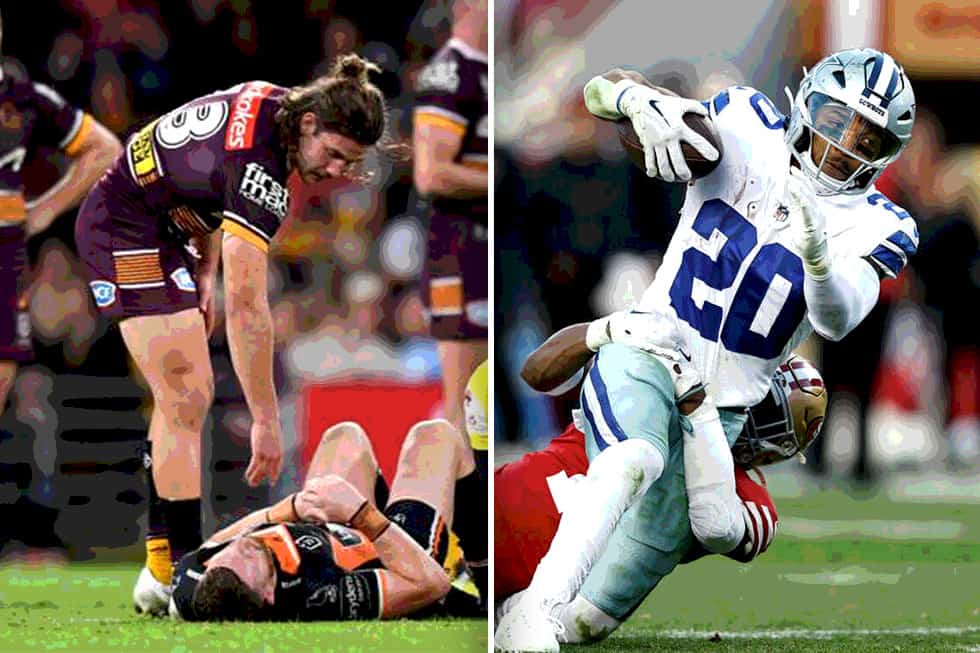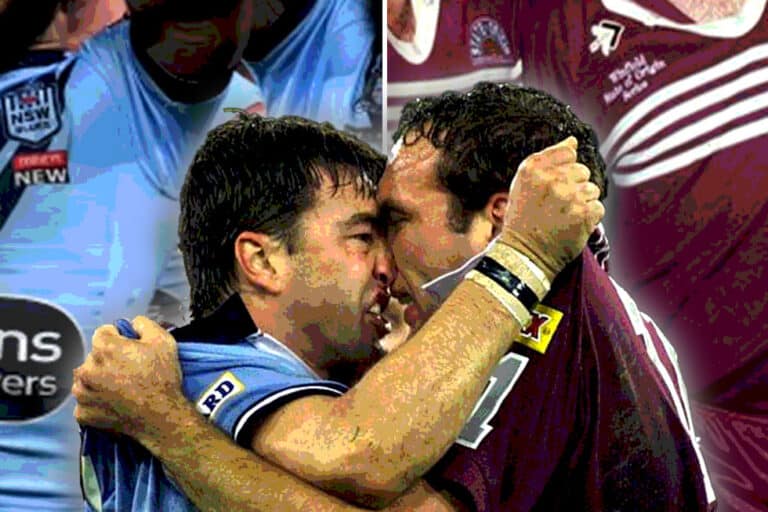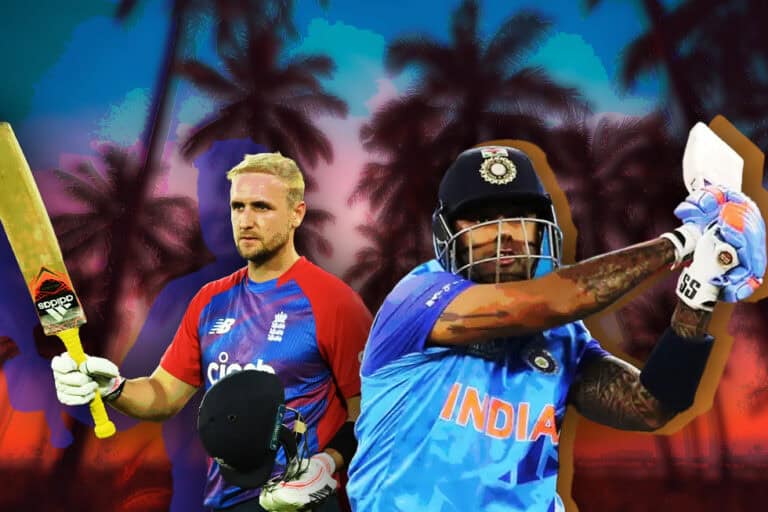The biggest issue facing rugby league right now is the hip drop tackle. The situation has become inflamed; players, fans and stakeholders are searching for answers.
The irony is that the NRL is a trend-setter in this space, garnering particular global attention over the off-season as America’s NFL only begins this entire conversation. America’s code is well behind, but it could now be argued that Australia’s code has gone too far ahead.
So we’ve reached a discourse flashpoint. It’s time to seek answers.
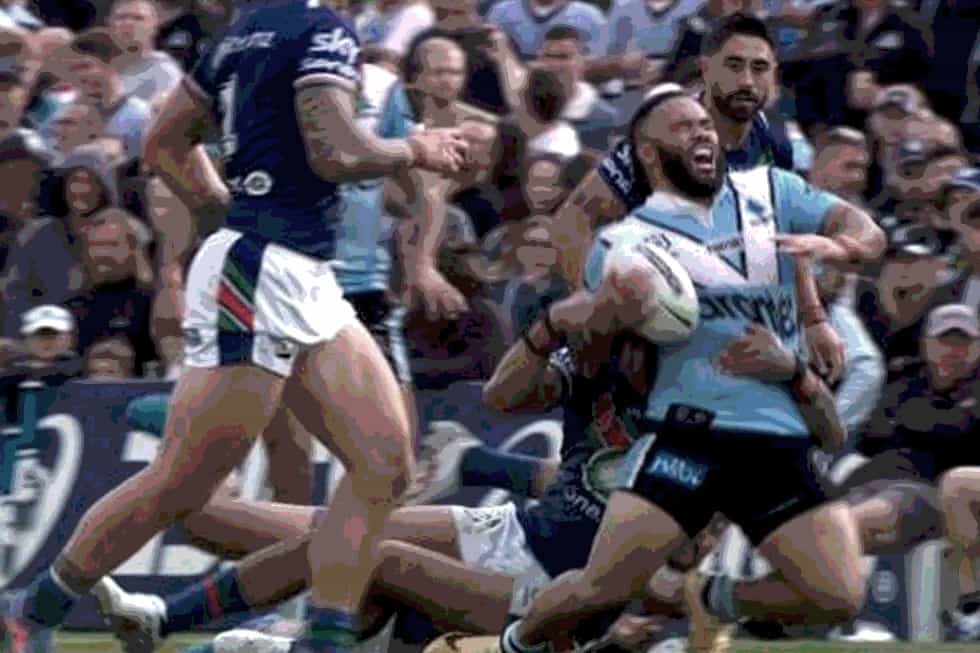
“I don’t know what one (a hip drop tackle) is anymore, I don’t know what we’re looking for, I don’t know what they’re looking to eradicate in the sport now.”
That comment from ABC journalist Nick Campton, on the Boom Rookies Podcast, probably sums up where it’s now at.
“That’s why this is becoming so confusing; their (the NRL) objective is clear, but their process now has just completely gone by the wayside.”
“The fact that none of us can identify what this looks like anymore is a really serious problem.”
So it’s time to try and figure a few things out, as different contact codes around the world look to implement strategies to protect their players and do right by their fans.
Plenty of controversy around the hip drop tackles yesterday, with the most common feedback being “that’s not a hip drop”. Think the knowledge around what constitutes a hip drop is still lacking – feel it has been poorly defined for fans pic.twitter.com/tSg3VfjqCT
— NRL PHYSIO (@nrlphysio) April 3, 2023
What’s a hip drop tackle?
The answer to this question was seemingly more clear-cut previously. A hip drop tackle occurs when a tackler’s full body weight is applied to the lower leg or legs of the ball-carrier. It leads to athlete’s legs being placed and bent in unnatural positions, which in many cases is causing severe and season-ending damage, mainly to knees.
The problem is, many fans and experts believe the implementation of the rule is now a long way off the objective.
NRL Head of football elite competitions Graham Annesley addressed media and fans Monday April 24, after another series of controversial calls in Round 8, reiteration the definition of the hip drop tackle. And unfortunately, he precisely illustrated the problem, by laying out an incredibly vague explanation of what a hip drop tackle is.
“Dropping body weight onto an opponent’s legs in such a way as to constitute an unacceptable risk of injury,” was Annesley’s definition. There is nothing specific about that sentence.
But us here at Only Sports have League fans’ best interests at heart. So let’s try.
When a tackler ‘loses their legs’ – with their feet no longer in contact with the ground, there becomes an enormous risk that the weight of the tackler ends up putting a great deal of pressure on the opponent’s lower limbs. It’s normally the second – or lower – tackler that creates a problem; with the defender’s team-mate stopping the ball-carrier’s momentum and keeping them pinned.
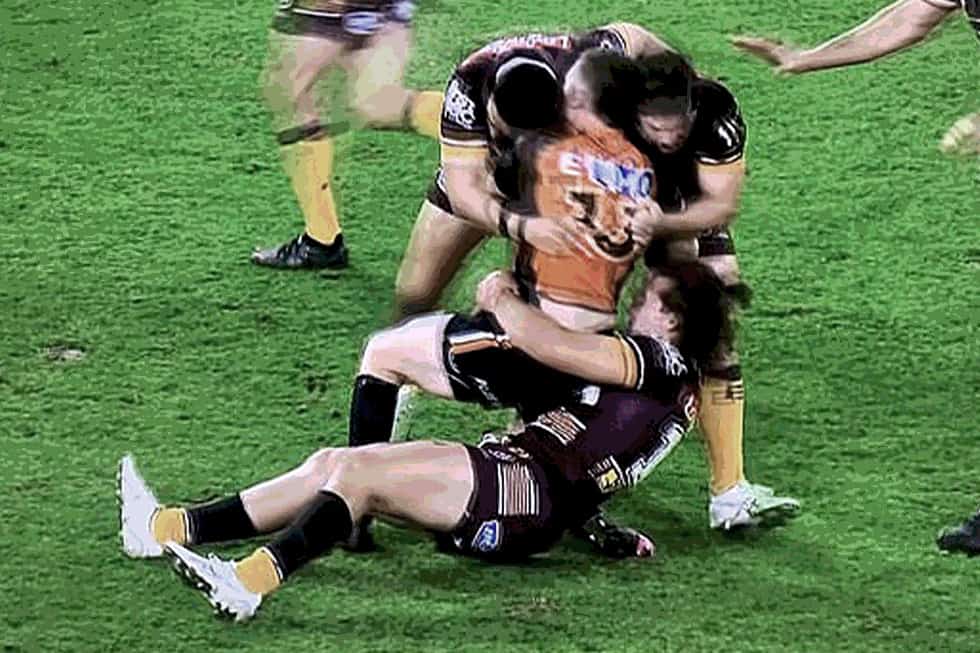
Sharks co-captain Wade Graham spoke eloquently on hip drop tackles on the April 11 edition of Fox League’s NRL360.
“We could do with some clearing up,” he said.
“The traditional hip drop, for me, would be one person or two people up on top, controlling the tackle, and then the third person trying to assist them in getting (the ball carrier) to the ground, using their weight to swing off the back of the hip and coming down on the lower legs.
He then spoke specifically to a couple of cases where players were penalised for a hip drop tackle, despite being the only tackler – a ‘one-on-one tackle’.
“If you’re in a one-on-one contest, you should be entitled to lose your legs to try and take them to the ground. The alternative would be just to keep running with the guy, letting them run, and lose metres.
Dale Finucane has bene charged with a grade two dangerous contact by the NRL's match review committee and faces a potential three or four game suspension
— Cronulla Sharks (@cronullasharks) April 3, 2023
“When you see the traditional one person up top, or two people up top, and the third guy coming in and leveraging his weight against the lower legs, they’re the ones we want to get out of the game.”
When did hip drop tackles become an offence in the NRL?
Hip drop tackles only had its first crackdown during the 2020 season; the NRL sent a memo mid-year, flagging the identification of a certain dangerous tackle creeping into the league.
It’s an issue the code started ‘grappling’ with as the wrestle crept further into the game… so yes, the pun was intended. Grappling techniques aim to halt and hold up the ball-carrier so more defenders can latch on and slow down the tackle and subsequently slow down the play-the-ball. Normally the trouble starts when there are multiple defenders in total control of a tackle.
These incidents are now becoming all too common; it all really hit the fan in the 2022 pre-season when Dragons forward Tyrell Fuimaono ruptured Eel Haze Dunster’s anterior, medial and posterior ligaments in his left knee with a tackle gone incredibly wrong.
This year, Cronulla captain Dale Finucane was sin-binned for a hip drop in the vital stages of his side’s Round 5 clash with the Warriors. Not only did the Sharks go on to lose that game, but the action’s also cost him weeks. In Round 6, it was Bulldogs forward Jacob Preston in a one-on-one tackle.
And three cases in the Eels’ Darwin clash with the Broncos in Round 8 has only further amplified the problems.
What other codes are looking at hip drop tackles?
There’s growing confusion down under with where this all sits in the NRL. And the irony is that in America’s National Football League, the NFL, the journey is barely underway.
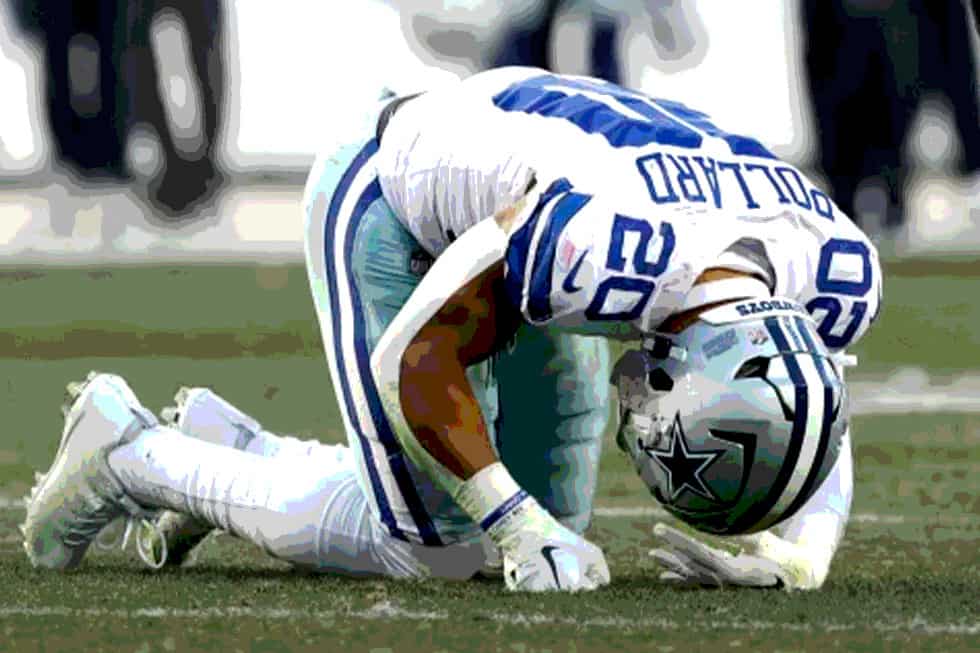
Plenty have been vocal and called out the NFL’s utter silence and refusal to act before the end of last season. And have paid credit to the NRL’s proactive approach in the process. That is now finally starting to change over in NFL land; better late than never.
If a big-name quarterback suffers a season-ending or potentially career-threatening leg injury to one of these actions, there could be an enormous price to pay for a franchise and even league-wide.
Multiple quarterback contracts have more than $200 million dollars guaranteed. It would make sense for the league to explore risk minimisation when it comes to the safety of the sport’s greatest assets.
And the athletes that are in many cases the most vulnerable to these actions – the quarterbacks – are the faces of the sport. These players hang in a pocket surrounded by some of the most freakish and athletically-gifted players in the world, looking up field for an option to throw to, while pass-rushers hunt and try to put them on the ground. And yet the conversation in the United States is really only starting now.
It was confirmed the NFL reached out the the National Rugby League in February to seek advice on the rule and explore the ‘mechanics of the tackle’. Dallas Cowboys star running back Tony Pollard had his left fibula snapped when pulled to ground by 49ers’ defensive back Jimmie Ward in the Playoffs. Using Wade Graham’s definition, this tackle was a one-on-one, but there’s no denying his body weight was heavily transferred through Pollard’s planted leg.
“It’s a big issue over there at the moment,” Graham Annesley said, previously addressing those conversations.
After Mahomes yesterday another textbook high ankle sprain mechanism for Tony Pollard. This one appears worse, additional concern for fracture. Hip drop tackle again too – not always a “dirty” play but a technique with high risk of injury to ball carrier pic.twitter.com/1Tl78OFkPo
— NRL PHYSIO (@nrlphysio) January 23, 2023
“We’ve provided as much information as we can to them. We’re not constantly in contact with them, but they’ve reached out and we’ve responded. It’s not just an NRL problem, it’s a problem in another tackling game.
“They’re in their off-season, so they haven’t made any final decision yet, but they’ve been in contact with us, and we’ve also had contact with the media in the United States about how we’ve been dealing it with here.”
Graham Annesley also added this, when speaking about the issue.
“You can’t say something is illegal just because there’s contact with a player’s leg. A player can get injured in a very legal tackle; we see that all the time.”
And that last part is the concern NRL fans are now confronted with. The League is admitting that not all incidents are illegal, yet over-policing it.
What’s the solution to the hip drop tackle?
A possible end point could be the NRL sending out clarification that any tackler that ‘loses his legs’ risks being punished, should the effort result in an injury to the ball-carrier. That kind of clear messaging will prompt clubs to assess technique and for fans to have a clearer understanding of the hip drop tackle.
It’s definable, identifiable and concise. Eradicating tacklers ‘losing their legs’ will swing the balance more into the favour of the attacking team, no doubt. It’ll be harder to stop a ball runner’s momentum; not a perfect conclusion to the problem. But it’ll be better than whatever we’re all currently tackling.

